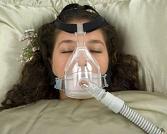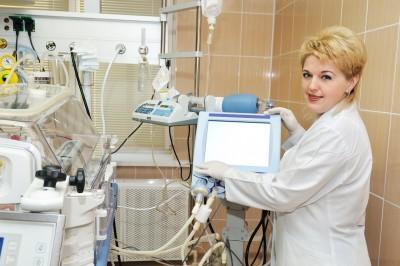- Updated on September 11, 2020
![]() By Dr. Artour Rakhimov, Alternative Health Educator and Author
By Dr. Artour Rakhimov, Alternative Health Educator and Author
- Medically Reviewed by Naziliya Rakhimova, MD

Definition of hypercapnia
Hypercapnia (or hypercarbia) is generally defined as an abnormally high level of carbon dioxide (e.g., more than 45 mm Hg) in the arterial blood. This medical term was more commonly used many decades ago, but it is still popular in some areas of the world and among some medical professionals.
We are going to use both terms (“hypercapnia” and “hypercarbia”) interchangeably. The word “hypercapnia” is currently most commonly used in emergency medicine and critical care.
Hypercarbia can be caused by different factors and conditions. Generally, there are 5 different “areas” or situations, each with varying meanings of hypercarbia. They are all described below.
Content of this web page:
1. Hypercarbia in emergency medicine and critical care
2. Hypercapnia related to manipulation of artificial ventilation due to beneficial CO2 effects (e.g., permissive hypercapnia)
3. Hypercapnia during treatment with carbogen and physiological tests
4. Hypercarbia due to chronic diseases
5. Hypercapnia during breathing exercises
6. Treatment of hypercapnia
1. Causes of hypercarbia related to emergency medicine and critical care
 Severe hypercapnia can be a very serious concern for respiratory specialists, emergency, and critical-care workers. It can be divided into chronic and acute.
Severe hypercapnia can be a very serious concern for respiratory specialists, emergency, and critical-care workers. It can be divided into chronic and acute.
Chronic hypercarbia can often accompany various respiratory conditions that compromise gas exchange in the lungs leading to the inability of CO2 to diffuse from the venous blood in the alveoli and or inability of the airways to provide normal ventilation of all alveoli. Common causes of hypercapnia include:
 – respiratory diseases (e.g., asthma, bronchitis, emphysema, chronic lung disease – COPD)
– respiratory diseases (e.g., asthma, bronchitis, emphysema, chronic lung disease – COPD)
– infectious diseases (bacterial pneumonia, bronchopneumonia, SARS or severe acute respiratory syndrome, botulism and pulmonary tuberculosis),
– inflammatory disorders (pulmonary sarcoidosis)
– cystic fibrosis (mucoviscidosis)
– neoplastic disorders (metastatic lung disease)
– pulmonary edema
– poisoning non-bacterial agents (asbestosis, berylliosis, coal workers lung or anthracosis, silicosis, and silicotuberculosis)
– metabolic disorders (obesity)
– sleep apnea syndrome
– primary hypoventilation
– Pickwick’s syndrome.
 Causes for acute hypercapnia include:
Causes for acute hypercapnia include:
– status epilepticus
– congestive heart failure
– respiratory failure or pulmonary insufficiency
– asphyxia or suffocation
– respiratory dead space excess
– breathing pure oxygen
– ventilator malfunction
– presence of foreign bodies in airways
– respiratory arrest
– coma
– overdose of medical drugs or respiratory suppressants (e.g., sedative drugs, salicylate intoxication/overdose, curare, morphine, and other opiates).
In these cases, hypercarbia is a life-threatening condition that requires professional medical attention.
2. Hypercapnia caused by manipulation of artificial ventilation due to beneficial CO2 effects (e.g., permissive hypercapnia)
 The fathers of respiratory physiology and the authors of the first medical textbooks on respiration definitely had a more objective view on the properties of CO2 (Haldane & Priestley, 1935; Henderson 1940). Later, the dangerous and unwise practice of indiscriminate use of pure (100%) oxygen became the norm in emergency care.
The fathers of respiratory physiology and the authors of the first medical textbooks on respiration definitely had a more objective view on the properties of CO2 (Haldane & Priestley, 1935; Henderson 1940). Later, the dangerous and unwise practice of indiscriminate use of pure (100%) oxygen became the norm in emergency care.
However, since the 1990s, many respiratory professionals regained sanity. As a result, hundreds of clinical studies have been published in relation to permissive hypercapnia. (The term “permissive hypercapnia” defines a ventilatory strategy used for acute respiratory failure in which the lungs are ventilated with a low-inspiratory volume and pressure.)
Permissive hypercarbia is currently used for:
– preterm infants (Miller & Carlo, 2007)
– neonates (Toms & Ambalavanan, 2004; Varughese et al., 2002)
– pediatric acute lung injury (Rotta & Steinhorn, 2006)
– prevention of lung injuries (Lafgey et al, 2004)
– ARDS or acute respiratory distress syndrome (Lewandowski, 1996; Hickling & Joyce, 1995) and some other situations.
3. Hypercapnia during treatment with carbogen and physiological tests
 The terms “hypercapnia” and “hypercapnic” are also used in situations where CO2 gas is added to inspired air for treatment or testing various physiological effects. Gas mixtures (with 1%, 2%, 2.5%, or 5% CO2 and different O2 contents ranging from 20% to maximum) are used for testing patients with asthma or panic attacks and for treating cancer patients with carbogen mixtures for better oxygenation of tumors (carbogen gas, by definition, has only CO2 and O2).
The terms “hypercapnia” and “hypercapnic” are also used in situations where CO2 gas is added to inspired air for treatment or testing various physiological effects. Gas mixtures (with 1%, 2%, 2.5%, or 5% CO2 and different O2 contents ranging from 20% to maximum) are used for testing patients with asthma or panic attacks and for treating cancer patients with carbogen mixtures for better oxygenation of tumors (carbogen gas, by definition, has only CO2 and O2).
Note that during these studies, subjects usually do not have an elevated level of CO2 in the arterial blood. Many of them have less than 40 mm Hg, which is the normal-arterial-CO2 value. Thus, many researchers apply the term “hypercarbia” to a relative increase in arterial blood CO2 due to breathing air with higher-CO2 content. (Furthermore, such CO2-rich air may trigger panic attacks, and some subjects may even lower their already low arterial-blood-CO2 values.)
4. Hypercarbia due to chronic diseases
Numeral health problems are routinely characterized by arterial-CO2 levels that are too high. This generally relates to severe forms of asthma, cystic fibrosis, COPD (emphysema and bronchitis included) and some other conditions with reduced ventilation/perfusion ratios and hypoxemia (reduced oxygenation of the arterial blood).
What is the mechanism or pathophysiology of these changes? You can check out the medical studies related to breathing rates in people with the following conditions:
Ventilation rates (chronic diseases)
| Condition | Minute ventilation |
Number of people |
All references or click below for abstracts |
| Normal breathing | 6 L/min | – | Medical textbooks |
| Healthy Subjects | 6-7 L/min | >400 | Results of 14 studies |
| Asthma | 13 (+-2) L/min | 16 | Chalupa et al., 2004 |
| Asthma | 15 L/min | 8 | Johnson et al., 1995 |
| Asthma | 14 (+-6) L/min | 39 | Bowler et al., 1998 |
| Asthma | 13 (+-4) L/min | 17 | Kassabian et al., 1982 |
| Asthma | 12 L/min | 101 | McFadden, Lyons, 1968 |
| COPD | 14 (+-2) L/min | 12 | Palange et al., 2001 |
| COPD | 12 (+-2) L/min | 10 | Sinderby et al., 2001 |
| COPD | 14 L/min | 3 | Stulbarg et al., 2001 |
| Cystic fibrosis | 15 L/min | 15 | Fauroux et al., 2006 |
| Cystic fibrosis | 10 L/min | 11 | Browning et al., 1990 |
| Cystic fibrosis* | 10 L/min | 10 | Ward et al., 1999 |
| CF and diabetes* | 10 L/min | 7 | Ward et al., 1999 |
| Cystic fibrosis | 16 L/min | 7 | Dodd et al., 2006 |
| Cystic fibrosis | 18 L/min | 9 | McKone et al., 2005 |
| Cystic fibrosis* | 13 (+-2) L/min | 10 | Bell et al., 1996 |
| Cystic fibrosis | 11-14 L/min | 6 | Tepper et al., 1983 |
 In all of these cases, minute ventilation is elevated (up to about 2-2.5 times more than the norm). This leads to low alveolar-carbon-dioxide levels. CO2 is a potent dilator of airways (bronchodilator) and is crucial for the repair of alveoli (see references for hypocapnic-lung-injury effects below). As such, it can be concluded that overbreathing is the main factor that destroys lung tissue in these groups of patients and worsens oxygen delivery to body cells.
In all of these cases, minute ventilation is elevated (up to about 2-2.5 times more than the norm). This leads to low alveolar-carbon-dioxide levels. CO2 is a potent dilator of airways (bronchodilator) and is crucial for the repair of alveoli (see references for hypocapnic-lung-injury effects below). As such, it can be concluded that overbreathing is the main factor that destroys lung tissue in these groups of patients and worsens oxygen delivery to body cells.
There are additional effects of hyperventilation that cause cell hypoxia; a suppressed immune system (hence, frequent respiratory infections), reduced efficiency of ion pumps in mucosal layers due to tissue hypoxia causing more viscous mucus (with devastating health effects in cystic fibrosis), over-cooling and drying of airways, irritation of cough receptors located in the larynx and many other negative effects.
5. Hypercapnia during breathing exercises
 A variety of breathing exercises and techniques can be used to increase CO2 naturally. Thus, hypercapnia is a normal outcome of Pranayama, the Buteyko- reduced-breathing exercise (the main breathing exercise in the Buteyko breathing technique), the Frolov breathing device therapy and the application of many other breathing devices due to increased respiratory-dead volume (Samozdrav, Karbonic, Cosmic Breath, and many others).
A variety of breathing exercises and techniques can be used to increase CO2 naturally. Thus, hypercapnia is a normal outcome of Pranayama, the Buteyko- reduced-breathing exercise (the main breathing exercise in the Buteyko breathing technique), the Frolov breathing device therapy and the application of many other breathing devices due to increased respiratory-dead volume (Samozdrav, Karbonic, Cosmic Breath, and many others).
Meditation also has a positive effect on body-oxygen. This was concluded in clinical studies that measured various respiratory parameters in meditating Buddhist monks. It was discovered that these people meditate in a state of severe hypoventilation. Experience of Russian doctors and ancient yoga Sanskrit texts also suggest that with prolonged and reduced breathing, people can achieve numerous amazing health effects. More information (specific effects on health) and exact numbers (CO2 levels, breathing rates, maximum breath-holding times, etc.) are provided on another web page. The link to this web page is provided below as your bonus content.
People that breath through the diaphragm and take only 3-8 breaths per minute (as their automatic respiratory frequency at rest) and have about 2-4 L/min for minute ventilation have abnormally high arterial CO2 (e.g., more than 45 mm Hg). Such people can be considered super healthy. For health effects, see the Buteyko Table of Health Zones.
[/sociallocker]
Yoga masters also have very slow and light breathing at rest. For quotes from ancient yoga books and their secrets of super health, which is based on hypercapnia, visit the Yoga Breathing web page.
6. Treatment of hypercapnia or hypercarbia
Treatment of hypercapnia generally relates to chronic conditions such as severe asthma, chronic bronchitis, emphysema, and other disorders. For all these conditions, hypercapnia is accompanied by abnormally low oxygen saturation (hypoxemia) due to hyperventilation (see the Table above). Detailed information about the treatment of hypercarbia can be found on the page Treatment of Hyperventilation, which also provides therapy for hypoxemia.
Clinical References
– Haldane JS and Priestley JG, Respiration, 2nd Edition, Oxford University Press, 1935.
– Hasselbalch: Bioch. Zeitsch., 1912, xlvi (46), 416.
– Henderson Y, Professor, MD, Ph.D., Carbon Dioxide, from the: Cyclopedia of Medicine, 1940.
– Hickling KG, Joyce C. Permissive hypercapnia in ARDS and its effect on tissue oxygenation. Acta Anaesthesiol Scand Suppl. 1995; 107: 201-8.
– Laffey JG, O’Croinin D, McLoughlin P, Kavanagh BP. Permissive hypercapnia–role in protective lung ventilatory strategies. Intensive Care Med. 2004 Mar; 30(3): 347-56.
– Lewandowski K. Permissive hypercapnia in ARDS: just do it? Intensive Care Med. 1996 Mar;22(3):179-81.
– Miller JD, Carlo WA. Safety and effectiveness of permissive hypercapnia in the preterm infant. Curr Opin Pediatr. 2007 Apr; 19(2): 142-4.
– Rotta AT, Steinhorn DM. Is permissive hypercapnia a beneficial strategy for pediatric acute lung injury? Respir Care Clin N Am. 2006 Sep; 12(3): 371-87.
– Toms R, Ambalavanan N. Permissive hypercapnia during mechanical ventilation of neonates. Indian Pediatr. 2004 Aug; 41(8): 775-8.
– Varughese M, Patole S, Shama A, Whitehall J. Permissive hypercapnia in neonates: the case of the good, the bad, and the ugly. Pediatr Pulmonol. 2002 Jan; 33(1): 56-64.
– Woodgate PG, Davies MW. Permissive hypercapnia for the prevention of morbidity and mortality in mechanically ventilated newborn infants. Cochrane Database Syst Rev. 2001;(2):CD002061.

